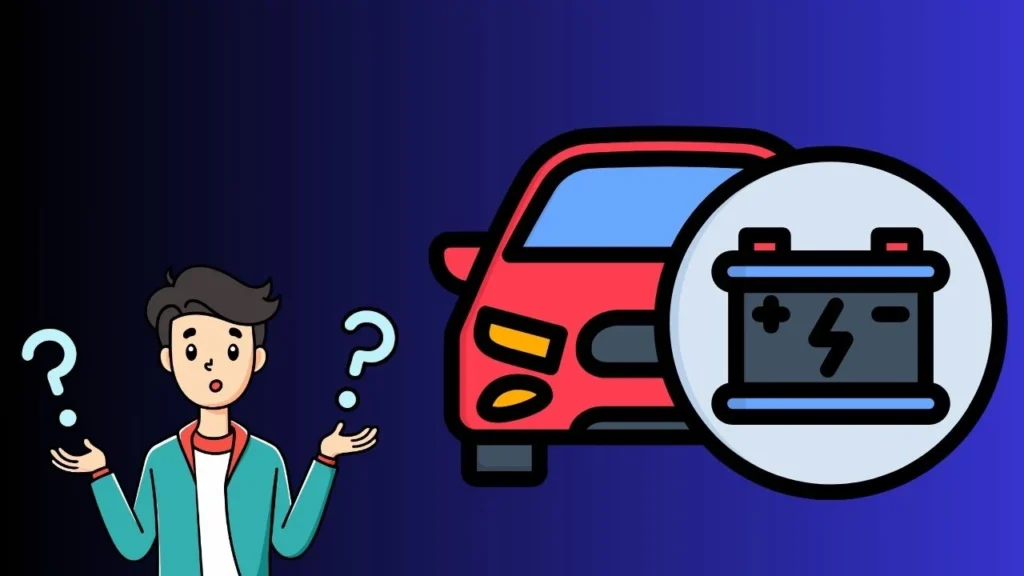I’ve often wondered how long to drive car to charge battery, especially when I notice it’s running low. At first, I thought driving for a few hours would do the trick, but it turns out there’s more to it. I’ve learned that driving time alone doesn’t always fully charge the battery.
For example, after an hour of highway driving, I noticed my battery was around 30-40% more charged, but in the city, with all the stopping and starting, the change was almost nothing. There are a few things that affect how much charge you get, like the battery’s health, the type of driving, and how well the alternator works. Learn more in our guide on how to charge a car battery without an AC outlet.
How long do I need to drive my car to charge the battery?
Driving for an hour on the highway can restore 30-40% charge, while 2-3 hours may bring it closer to full. City driving typically adds less than 20% due to frequent stops. If the battery is fully drained, even extended highway driving may not fully recharge it. Factors like alternator output, battery capacity, and overall health also affect charging efficiency. Learn more in our guide on how long to charge a car battery with a charger.
How Charging Works Explanation

When I first looked into how my car’s battery charges while driving, I discovered that the alternator is the key player. The alternator generates electricity while the engine is running, which helps keep the battery charged. As the engine turns, it powers the alternator, which sends electrical current to recharge the battery.
This process isn’t instant, though. For example, if your battery is at 30% charge, it can take several hours of driving for the alternator to bring it back to a useful level. A completely drained battery may take even longer.
Highway vs City Driving: Which Is Better for Charging?
The alternator works most efficiently when the engine runs at a higher RPM (speed), which is why highway driving is much better for charging. On the highway, you’re cruising at a steady speed, allowing the engine to run at higher RPMs for longer periods. This helps the alternator charge the battery faster. For example, after one hour of highway driving, you could expect to get 30-40% of your battery charged.
In contrast, city driving where you’re stopping and starting frequently doesn’t give the alternator enough time to generate power. In these conditions, the engine runs at lower RPMs, and the alternator doesn’t charge the battery as efficiently. After an hour of city driving, you might notice only a small increase in charge, maybe around 10-15% if the battery is already low. Learn more in our guide on the best portable car battery chargers.
What Affects How Fast Your Battery Charges?

When I drive to charge my car battery, I’ve learned that a few key factors really impact how quickly the battery charges. These include the battery’s health, the type of driving I’m doing, and how well the alternator is working.
Is Your Battery Ready to Go?
If your battery is old or worn out, it won’t charge as quickly. I’ve noticed that when my battery starts getting old, it takes longer to charge even after driving for a while. A new battery charges much faster. If yours is struggling, you might need more than just driving to fully recharge it. Learn more in our guide on the best solar car battery chargers for efficient charging solutions.
Highway or City Driving Which One Helps More?
The kind of driving you do makes a big difference. I’ve found that highway driving works best for charging because the engine runs at a steady speed. After about one hour on the highway, my battery can be 30-40% charged. But when I’m driving around the city with all those stops and starts, the battery doesn’t get as much charge since the engine’s speed is much lower.
Is Your Alternator Doing Its Job?
Your alternator is the one doing the heavy lifting when it comes to charging your battery. If you’re wondering how long to drive car to charge battery, the alternator’s condition plays a key role. If it’s working well, your battery charges faster. But if the alternator isn’t running smoothly, the charging process will be slower. I’ve had times when my alternator wasn’t working right, and I barely saw an increase in charge after a long drive. Learn more in our guide on the best trickle chargers for car batteries for reliable alternatives.
Charging Time Estimates

City Driving: Not Much Charge in Stop-and-Go Traffic
When I’m driving in the city with lots of stops and starts, I notice that my battery doesn’t charge much. After about 30 minutes of city driving, I typically see only a 10-15% increase in charge.
The alternator doesn’t get enough time to work efficiently, especially in heavy traffic where you’re idling or moving slowly. This kind of driving just doesn’t give the alternator the chance to generate enough power to recharge the battery quickly.
Highway Driving: A Better Way to Charge Your Battery
On the highway, it’s a completely different story. With steady driving at higher speeds, the alternator can charge the battery much more effectively. After about 1 hour of highway driving, I can usually see 30-40% of my battery charged.
The consistent speed and higher RPMs allow the alternator to produce more power, making it a much better option for recharging the battery. If you need a quicker charge, highway driving is the way to go.
Fully Drained Battery: Driving Isn’t Enough
If my battery is nearly dead, just driving won’t be enough to fully recharge it. Even with hours of highway driving, I can only expect a partial charge; it may take several hours to see a noticeable improvement.
For a completely drained battery, I usually turn to a battery charger to get the job done faster. Charging with a dedicated charger provides a more consistent and powerful charge, speeding up the process compared to just relying on driving.
Signs of Proper Charging

After I’ve been driving for a while, I always like to check if my battery is actually charging properly. One easy way to do this is by watching for certain dashboard lights. If the alternator is working well, the battery warning light should stay off. If the light turns on, it could mean there’s a problem with the charging system. I also check the voltage with a voltmeter typically, a healthy, charging battery will read around 13.7 to 14.7 volts while the car is running. Learn more in our guide on the best recommended car battery chargers for efficient charging solutions.
Conclusion
Driving your car helps charge the battery, but it’s not enough to fully recharge a completely drained one. Highway driving is more efficient than city driving due to the steady engine speed.
Factors like battery health, alternator efficiency, and the level of discharge also affect charging. If you notice issues or your battery is weak, it’s best to get it checked or use a battery charger for a quicker, more complete recharge.
Final Wrap-Up
At the end of the day, driving can help recharge your car battery, but it’s not a fast fix for a completely drained battery. The process is gradual and depends on factors like your driving conditions, the health of your battery, and the efficiency of your alternator.
From my experience, how long to drive car to charge battery often depends on the type of driving. Highway driving is much more effective than city driving due to the steady engine speed, allowing the alternator to work at its best. If I ever notice the battery warning light or unusual voltage readings, I know it’s time to check the alternator or use a dedicated battery charger for quicker results.
FAQs
Q1. How long does it take to charge a car battery while driving?
The time it takes to charge a car battery while driving depends on factors like driving conditions and battery health. On average, highway driving for about an hour can give your battery 30-40% charge. City driving, on the other hand, doesn’t help much due to frequent stops and lower RPMs.
Q2. Can I fully charge a dead battery just by driving?
While driving can help charge a battery, it won’t fully charge a completely dead one, especially if the battery has been severely drained. In such cases, you may need to use a dedicated battery charger to fully recharge it.
Q3. How can I tell if my battery is charging properly while driving?
You can check if your battery is charging properly by monitoring the dashboard battery light. If the light stays off, everything is likely working fine. Also, using a voltmeter to check the voltage around 13.7 to 14.7 volts is ideal when the engine is running.
Q4. Does the alternator affect how long it takes to charge the battery?
Yes, the alternator plays a key role in charging the battery. If the alternator isn’t working efficiently, it will take longer for the battery to charge, or it may not charge at all. A faulty alternator can result in low voltage readings and problems with battery charging.
Q5. Does driving speed matter when charging the battery?
Yes, higher speeds or highway driving are more effective for charging the battery than city driving. This is because highway driving maintains a consistent RPM, which helps the alternator generate a more stable charging current, whereas city driving with frequent stops can slow down the charging process.




